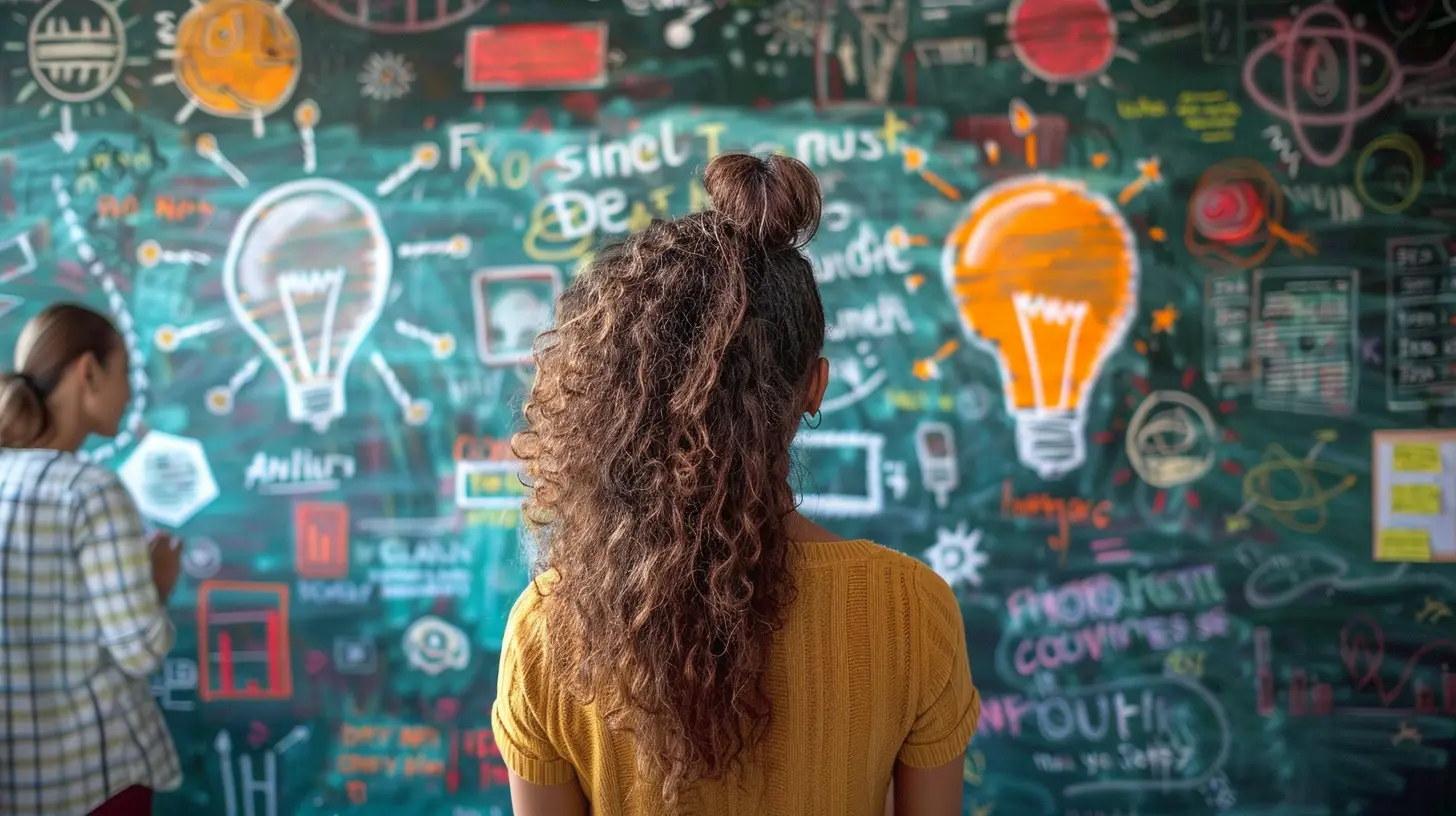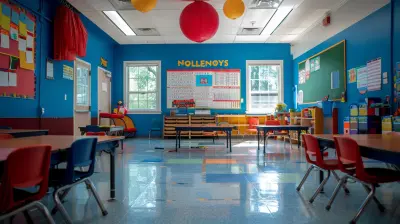12 April 2025
Ever heard the phrase "teamwork makes the dream work"? Well, it's true—especially when it comes to learning. Imagine a classroom where students don’t just memorize facts but actually engage in dynamic discussions, challenge each other’s ideas, and grow together. That’s the magic of collaborative learning!
But here’s the real kicker: collaborative learning doesn’t just boost academic success—it also helps develop a growth mindset. Instead of fearing mistakes, students see them as stepping stones to improvement. Sounds like a game-changer, right?
Get ready, because we’re diving deep into how collaborative learning fuels a growth mindset and why it’s the secret sauce to lifelong success.

What Is a Growth Mindset?
Before we get into the nitty-gritty, let's break down what a growth mindset actually is.Coined by psychologist Carol Dweck, the concept revolves around the belief that intelligence and abilities aren’t fixed—they can develop over time with effort, persistence, and feedback. In contrast, a fixed mindset makes people believe their intelligence is set in stone, which often leads to avoiding challenges or giving up easily.
Think of it like a muscle—the more you challenge your brain, the stronger it gets. And when you mix this mindset with collaborative learning? Boom! That’s when real growth happens.

Why Collaborative Learning is the Perfect Fit
Ever worked on a puzzle with friends? Everyone brings a different perspective, and suddenly, that confusing piece just clicks into place. That’s exactly how collaborative learning works!1. Encourages Open-Mindedness
When students collaborate, they encounter different viewpoints. Some ideas might challenge their own, which naturally pushes them to rethink and refine their perspectives. Instead of fearing being wrong, they start to see mistakes as learning opportunities.2. Turns Challenges into Motivation
Picture this: a student struggles with a math problem alone—they might give up. But in a group setting? They receive encouragement, multiple explanations, and new strategies, making it easier to push through challenges. This constant cycle of learning and improving strengthens a growth mindset.3. Develops Problem-Solving Skills
Ever noticed how group discussions often lead to unexpected solutions? That’s because teamwork brings together a mix of skills, experiences, and creativity. Instead of getting stuck, students learn to adapt, brainstorm, and think critically—all essential components of a growth mindset.4. Cultivates a "We’re in This Together" Attitude
One of the biggest barriers to growth is fear of failure. But when learning happens collaboratively, failure isn’t terrifying—it’s just part of the process. Students realize they’re not alone in their struggles, making it easier to take risks and embrace challenges.
How to Foster a Growth Mindset Through Collaborative Learning
Now that we know why collaborative learning supercharges a growth mindset, let’s talk about the how. Here are some practical strategies for making it happen in classrooms, study groups, or even workplace training sessions.1. Normalize Mistakes as Part of Learning
Imagine a classroom where mistakes aren’t just tolerated—they’re celebrated. Sounds refreshing, right? Teachers can:- Encourage students to analyze their mistakes: What went wrong? What can be improved?
- Create a safe space where no one feels embarrassed for getting an answer wrong.
- Highlight famous failures—think about how Einstein struggled in school but became one of the greatest minds in history!
When students embrace failure as part of their journey, flipping from a fixed to a growth mindset becomes second nature.
2. Promote Peer Feedback
Constructive feedback is a goldmine for growth. Encouraging students to review each other’s work not only builds confidence but also sharpens critical thinking skills. The key is to:✔️ Focus on strengths first, then suggest improvements.
✔️ Emphasize that feedback isn’t about judgment—it’s about growth.
✔️ Make it a two-way street: Teachers can model how to give and receive feedback effectively.
This approach helps students develop resilience while reinforcing the belief that they can and will get better with effort.
3. Use Group Goals Instead of Just Individual Success
Collaboration is all about synergy—everyone contributes towards a shared goal rather than competing against each other. This mindset can be reinforced by:- Setting team-based learning objectives instead of just personal achievements.
- Encouraging students to support and uplift their peers.
- Rewarding collaboration just as much as individual accomplishments.
When students realize they grow together, they’re more likely to push past their limits instead of settling for mediocrity.
4. Encourage Diverse Thinking
Want to make collaborative learning even more powerful? Mix it up. Diversity in perspectives leads to richer discussions and deeper learning. Some ways to encourage this include:- Assigning group projects that require different skills so everyone plays a vital role.
- Encouraging students to explain concepts in their own words, even if their thinking differs from the textbook.
- Using debates or discussions where students have to consider multiple viewpoints.
When students see that there’s never just one right way to solve a problem, their minds naturally become more flexible and growth-oriented.
5. Make Reflection a Habit
Reflection is the glue that holds learning together. After a group activity, encourage students to:- Discuss what they learned and where they struggled.
- Share personal takeaways—what was surprising? What skills improved?
- Set future improvement goals based on the experience.
This step solidifies learning and reinforces the idea that progress is ongoing. 
Real-Life Success Stories
Still skeptical? Let’s look at some real-world examples where a growth mindset and collaboration create success.1. Google’s Work Culture
Google’s innovation isn’t just about hiring smart people—it’s about fostering a culture where teamwork and continuous learning are the norm. Their famous "psychological safety" principle encourages employees to take risks without fear of embarrassment, helping them thrive.2. Finland’s Education System
Finland consistently ranks as one of the best in education. Why? Their schools prioritize collaborative learning, student autonomy, and problem-solving over rote memorization. The result? Students who love learning and adapt quickly to challenges.3. NASA’s "Failure is Not an Option" Mindset
Space exploration is built on trial and error. NASA engineers work in highly collaborative teams where failure is analyzed, not punished. This culture pushes innovation forward, proving that a growth mindset is key to groundbreaking achievements.Final Thoughts
At the end of the day, fostering a growth mindset through collaborative learning isn’t just about getting good grades—it’s about preparing for life. The ability to embrace challenges, learn from others, and continuously improve is what separates successful learners from stagnant ones.So, whether you’re a teacher, a student, or just someone looking to level up—embrace collaboration, take risks, and never stop growing. The future belongs to those who believe in the power of "yet": *I don’t know this… yet!






Gabriel Oliver
Collaborative learning effectively nurtures a growth mindset, enhancing students' confidence and problem-solving skills.
April 16, 2025 at 10:34 AM